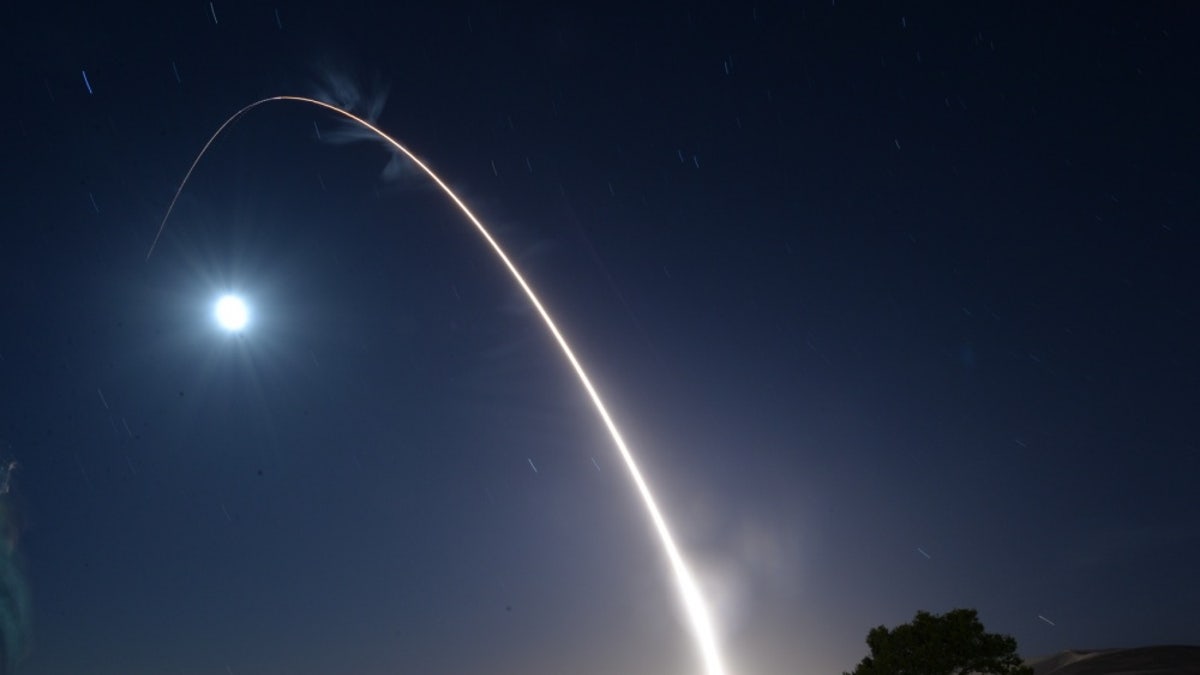Fox News Flash top headlines for August 24
Fox News Flash top headlines are here. Check out what's clicking on FoxNews.com.
Senior Air Force weapons developers are concerned about a potential intercontinental ballistic missile (ICBM) readiness gap caused by the decline of existing Minuteman III weapons and a potential delay with bringing the new Ground Based Strategic Deterrent (GBSD) online.
The Air Force’s GBSD program, an effort to build as many as 400 new ICBMs, is slated to emerge toward the middle or end of the 2020s. However, existing Minuteman III are now more than 50 years old and on the decline due to obsolescence.
This scenario presents a significant predicament for nuclear deterrence, according to Lt. Gen. Richard M. Clark, deputy chief of staff for Strategic Deterrence and Nuclear Integration, who expressed concern that potential delays with the GBSD could risk a “gap.”
NEW AIR FORCE STEALTH BOMBER ARRIVES IN JUST '2 YEARS'
"A gap between Minuteman III and GBSD is not something we can have, especially since the ICBM is the cornerstone of our nuclear defense,” Clark told The Mitchell Institute Nuclear Defense Forum.

An unarmed U.S. Air Force Minuteman III intercontinental ballistic missile launches during an operational test May 3, 2017, at Vandenberg Air Force Base, Calif. - file photo. (U.S. Air Force photo by Airman 1st Class Daniel Brosam)
A small emerging gap may already be taking place, according to a Government Accountability Office report, which stated that the Minuteman III may not be able to meet full mission requirements by 2026.
While Clark wants to make sure that the GBSD is fully funded with solid requirements and making technical progress with prototypes, he also explained that the Air Force is now pursuing as many as 20 modernization programs for the Minuteman III.
Recognizing that the 50-year-old weapon certainly has limitations and can only be upgraded to a certain extent, Clark explained that there is important ongoing work to improve the missile itself, as well as its launchers and boosters.
“All of these programs are intended to extend Minuteman III before it falls off a cliff. We are investing to keep the gap closed but that margin is fragile,” Clark said.
The existing GBSD program is being engineered to bring new levels of reliability, targeting and guidance technologies to sustain the U.S. ground-fired ICBM fleet well into the 2080s and beyond. The Air Force is already working on prototypes and, according to Will Roper, Assistant Secretary of the Air Force, Acquisition, Technology & Logistics, is using digital modeling to expedite the developmental process.
NEW AIR FORCE NUCLEAR-ARMED ICBMS TO DEPLOY BY 2029
"With digital engineering we can look at 10 to 20 designs,” Roper told an audience as far back as several years ago at an Air Force Association Symposium.
CLICK HERE TO GET THE FOX NEWS APP
The new ICBMs will be deployed roughly within the same geographical expanse in which the current weapons are stationed. In total, dispersed areas across three different sites span 33,600 miles, including missiles in Cheyenne, Wyoming, Minot, North Dakota and Great Falls, Montana.
-- Kris Osborn is the Managing Editor of Warrior Maven and The Defense Editor of The National Interest --

